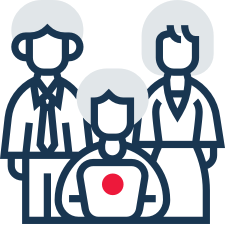Alarming Rise in Physical Inactivity
The study, conducted across 197 countries from 2000 to 2022, shows a sharp rise in physical inactivity among Indian adults. In 2022, 45.4% of Indian adults were inactive, up from 22.4% in 2000. The gender disparity is notable, with 52.6% of women and 38.4% of men physically inactive. If this trend continues, inactivity levels could reach 55% by 2030.Health Risks of Inactivity
WHO recommends adults engage in 150 minutes of moderate-intensity or 75 minutes of vigorous-intensity physical activity per week. Failure to meet these guidelines can lead to severe health issues, including cardiovascular diseases, type 2 diabetes, dementia, and certain cancers. Inactive adults are more susceptible to these conditions.Sedentary Lifestyles and Office Work
Modern office work contributes significantly to physical inactivity. City-based doctors highlight the role of easy access to mobile phones and snacks in reducing physical movement, exacerbating sedentary habits. In a TOI report, as told to Anuja Jaiswal, Dr. Hitesh Bhandari from the Indian Spinal Injuries Centre notes an increase in patients with orthopaedic issues related to inactivity and poor diets. "In our OPD, we see a substantial number of patients with orthopaedic issues related to sedentary lifestyles and poor diets. In a month, the number of such patients ranges between 15 and 25. This indicates that these conditions are prevalent and increasing," said Dr. Bhandari. TOI.in
TOI.inImpact on Orthopaedic Health
Dr. Bhandari further explained, “Sedentary lifestyles and consumption of junk food are key contributors to diseases. These include osteoporosis, where a lack of weight-bearing exercise can lead to weaker bones, and osteoarthritis, which is exacerbated by obesity caused by poor diet and inactivity. Chronic lower back pain is another common issue, resulting from poor posture and weak core muscles due to inactivity. Adults aged 40-65 are most affected by a sedentary lifestyle in terms of orthopaedic health. This age group often has desk jobs and establishes sedentary habits, leading to musculoskeletal problems.”Cardiovascular Concerns
Dr. Balbir Singh from Max Super Speciality Hospital emphasized the cardiovascular risks of inactivity, affecting both heart and brain health. "The consequences of a sedentary lifestyle are more pronounced in older age groups, particularly those aged 40 and above. However, in recent years, there has been a significant change in the lifestyle habits of younger groups. The younger generation is also being impacted, as many work on computers and avoid in-person interactions. Online meetings and lack of walking are becoming prevalent among them. At least 80% of the people who visit my OPD lead a sedentary lifestyle," Dr. Singh said.Impact on Women and Younger Population
Women tend to lead more inactive lifestyles compared to men. Many believe household chores constitute significant physical activity, which is a misconception. "Women tend to lead a more inactive lifestyle compared to men," Dr. Singh added. "Many women believe working in the kitchen and performing household chores constitute significant physical activity, and they often claim to be very active as a result. However, this perception is inaccurate."Rising Cancer Incidence
Dr. Anoop Saraya from ILBS highlighted the role of genetic predisposition and unhealthy eating habits in increasing health risks. "Individuals with fatty liver are at a higher risk of developing non-alcoholic fatty liver disease, which can progress to liver fibrosis, scarring, and cell destruction. In advanced stages, this condition may lead to cirrhosis, and those with cirrhotic liver have a higher likelihood of developing liver cancer compared to the general population. The progression from fatty liver to liver malignancy can span over 20-25 years," Dr. Saraya explained.Mental Health Implications
Dr. Praveen Gupta from Fortis Hospital added that insufficient exercise can contribute to mental health issues, including anxiety and depression. "Insufficient exercise can contribute to psychological issues, and there is a correlation between eating unhealthy food and experiencing anxiety and depression," he said. A sedentary lifestyle may negatively impact a person’s mental well-being, and the consumption of nutrient-poor, high-calorie foods has been associated with increased levels of stress and low mood.The rise in physical inactivity among Indian adults is a concerning trend with severe health implications. Emphasizing the importance of regular physical activity and healthier lifestyles is crucial for combating this growing issue.
(With inputs from TOI)
(Catch all the Business News, Breaking News, Budget 2024 Events and Latest News Updates on The Economic Times.)
Subscribe to The Economic Times Prime and read the ET ePaper online.
Read More News on
(Catch all the Business News, Breaking News, Budget 2024 Events and Latest News Updates on The Economic Times.)
Subscribe to The Economic Times Prime and read the ET ePaper online.


 Get Unlimited Access to The Economic Times
Get Unlimited Access to The Economic Times






